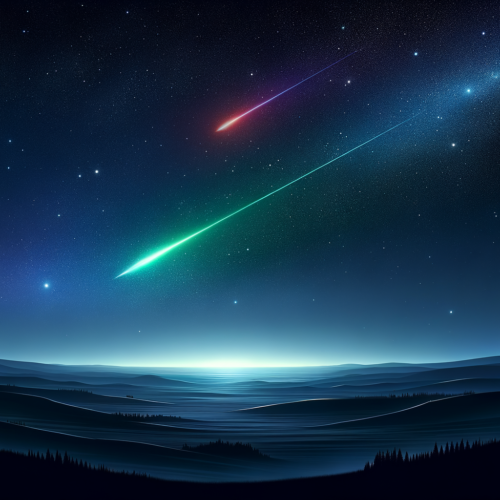The Northern Lights: A Celestial Encore Awaits
-
Auroral Displays Set to Dazzle the U.S. Again
-
Unpacking the Science Behind the Northern Lights
-
Solar Cycle 25 Amplifies Celestial Activity
A Glimpse into Recent Celestial Wonders
The skies above the United States have been a canvas for some of nature’s most captivating performances this year. From the mesmerizing dance of the “devil comet” to the ethereal glow of the northern lights, skywatchers have been treated to an array of celestial phenomena. And the cosmic show isn’t over yet! Predictions suggest that the aurora borealis, or northern lights, may soon grace the skies again, captivating onlookers with its luminous beauty.
What Ignites the Northern Lights?
The magic behind the northern lights begins with solar storms. These stellar tempests, composed of solar flares and coronal mass ejections (CMEs), hurl plasma and magnetic material into the cosmos. When these charged particles journey towards Earth and collide with our magnetic field, they spiral towards the poles, mingling with atmospheric gases to create the spellbinding light displays known as the aurora borealis.
The Science of Solar Activity
Our current witness to increased auroral activity ties back to the rhythms of Solar Cycle 25. During these cycles, the sun undergoes a dramatic transformation, flipping its magnetic poles and entering a phase of heightened activity. This cycle has already brought us some of the largest solar flares seen in years, stirring up the cosmic winds and fueling the fires of the northern lights.
Forecasting a Luminous Future
As we wade deeper into Solar Cycle 25, the anticipation for more auroral displays grows. Mark Miesch from NOAA’s Space Weather Prediction Center suggests we’re in the midst of what could be likened to a “solar hurricane season,” a period of intensified solar activity that may continue to paint the night skies with the aurora’s otherworldly hues through the end of 2024 and into 2025. With a forecast promising more robust solar storms, the chances of witnessing the northern lights in the U.S. once again seem promising, possibly even stretching as far south as Florida and Hawaii.
Jon’s Take
As we orbit around the sun on this spaceship we call Earth, it’s easy to forget the vast and dynamic universe beyond. The northern lights serve as a breathtaking reminder of the cosmos’ wonders, a celestial ballet choreographed by the sun and Earth’s magnetic field. While predicting their appearance may be as uncertain as forecasting a cosmic dance, the promise of their return invites us to keep our eyes on the skies, ready for the next performance. Remember, the truth isn’t just out there—it’s right here, unfolding above us in the night sky.




